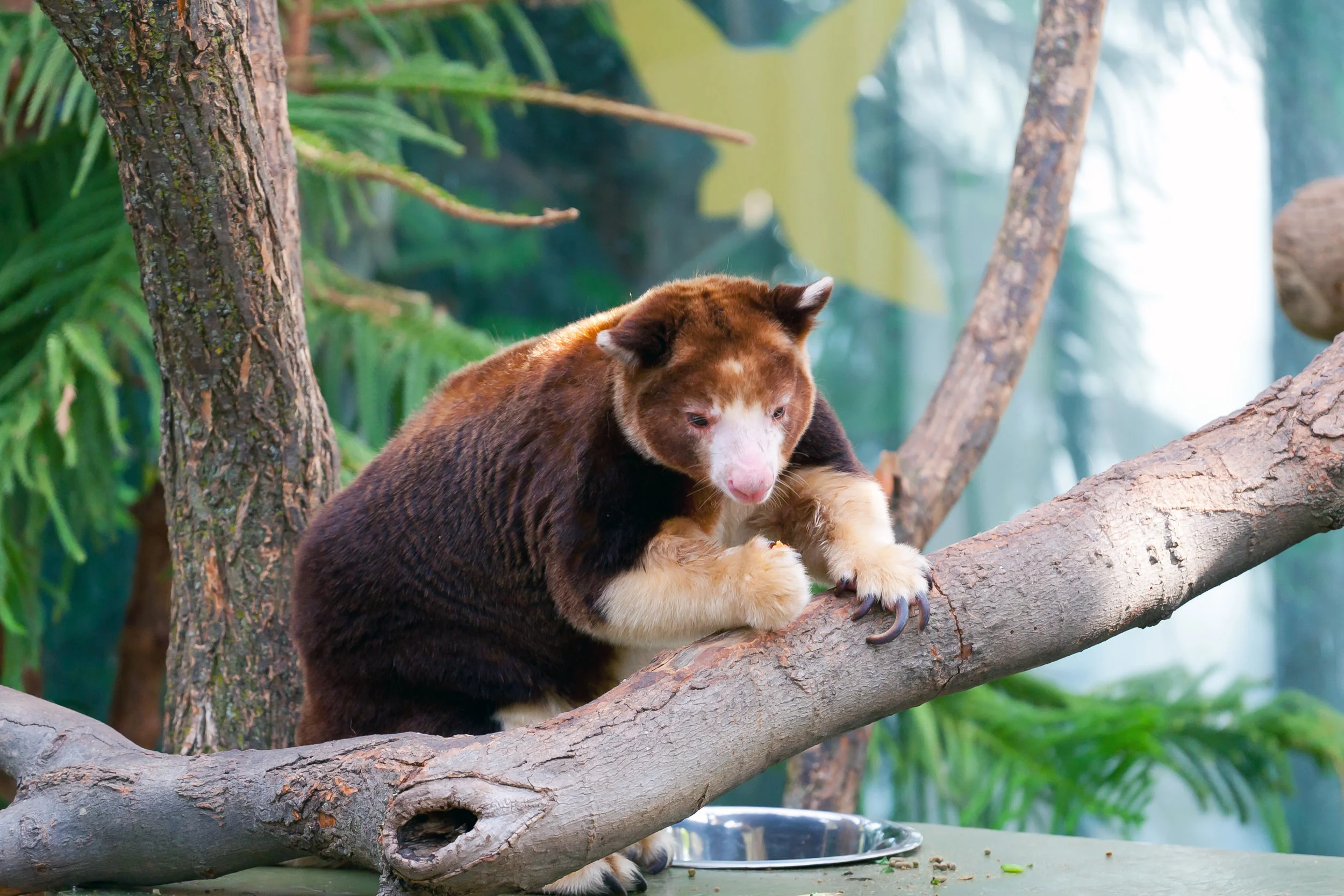Tree Kangaroo
"Tree Kangaroo Kaleidoscope" by Christina Marent (Copic markers)
“I was inspired to choose the Tree Kangaroo because it reminded me of an imaginary animal. Tree Kangaroos are creatures that one would not expect to exist, but indeed they DO—and their great diversity and beauty is not well known. I tried to capture the captivating charm of these animals in my illustration so that others may be encouraged to learn more about this delightful and intriguing marsupial.”
Your purchase is helping Expedition Art and Saving Species purchase land in Sumatra! Learn more about the project.
Habitat
Tree kangaroos live in mountainous cloud forests as well as lowland forests. They spend most of their time in trees. They are located in Indonesia, Papua New Guinea, and Australia, where they are the largest arboreal mammal.
Family Life
Tree kangaroos have become well adapted to their life up in the trees, with physical and behavioral adaptations that suit the wide range of activity they engage in above ground. Tree kangaroos are fairly solitary animals. Females and males have non-overlapping home ranges but a male’s range will overlap several females’ range. Tree kangaroos are polygamous; males will interact with several females. The only strong social bond these animals form is between mother and offspring. Tree kangaroos use their vision, touch, smell and hearing to perceive their environment.
Lifespan
They live up to 20 years in captivity.
Hunting Habits/Diet
The tree kangaroo eats mostly leaves and fruit, although they will collect fruit that has fallen to the ground. The animals also eat grains, flowers, sap, eggs, young birds, and even bark.
Population
Critically endangered there is thought to be fewer than 250 tree kangaroos remaining in the wild.
Fun Facts
Tree kangaroo can leap distance of 30 feet between the trees and safely land on the solid ground from a height of 60 feet.
Why are they Endangered?
Tree kangaroos are most profoundly affected by habitat loss and degradation, as well as illegal hunting. Indigenous populations will hunt and kill tree kangaroos. Their habitat has been significantly reduced, restricting their range and the availability of food. Logging and timber production as well as other agricultural activities have provided devastating to the animal. Deforestation to make space for palm oil plantations has provided equally catastrophic.
Status
Each species of tree kangaroo has a unique classification by the IUCN. Some are Critically Endangered; some are Near Threatened or Vulnerable.


